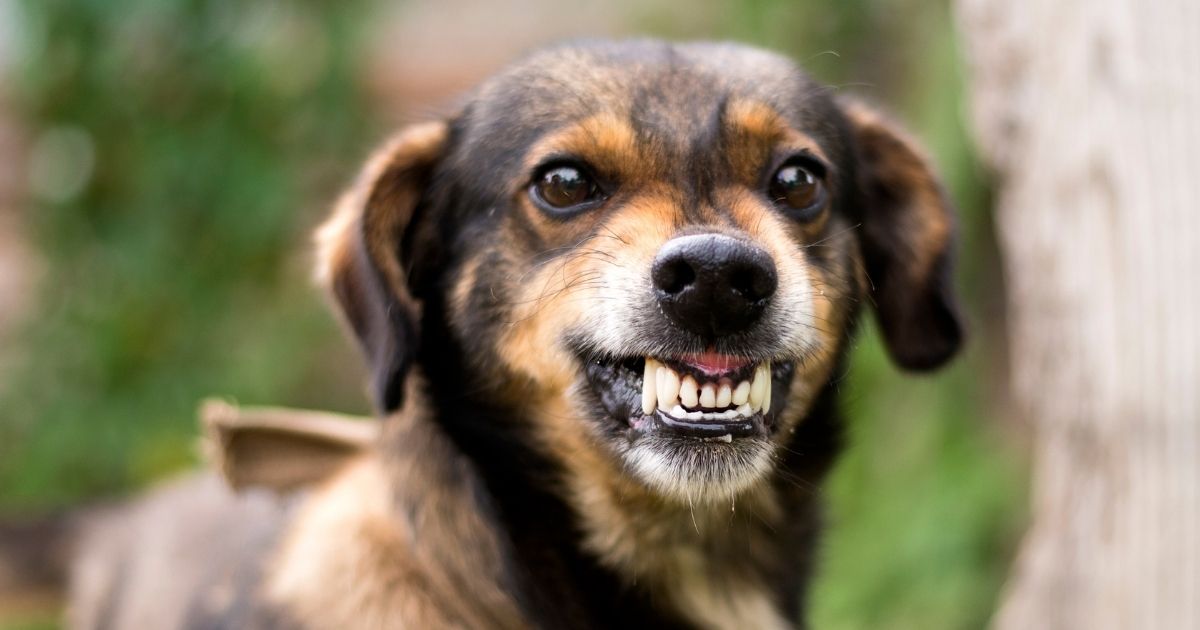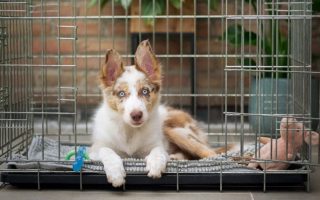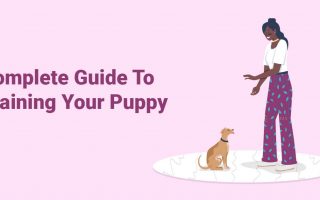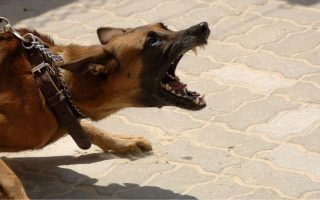Dogs remain one of the fewest members of the animal world known to have a special bond with humanity.
Already an integral part of the family and society, they have shown love, care, and companionship towards us in every possible way.
These canines sometimes display aggression, which becomes a matter to worry about for most persons.
While some dog owners are already facing this challenge, as a future dog parent, you should know these proven tips on how to calm an aggressive dog.
But are dogs naturally aggressive? Can an aggressive dog be handled? We will see these in the course of this article.
Aggression in Dogs Explained
Aggression is a trait shown by most animals when faced with stress and difficulties.
For canines, aggression tends to be more of a reaction than action, and there are many reasons why a dog can suddenly become belligerent.
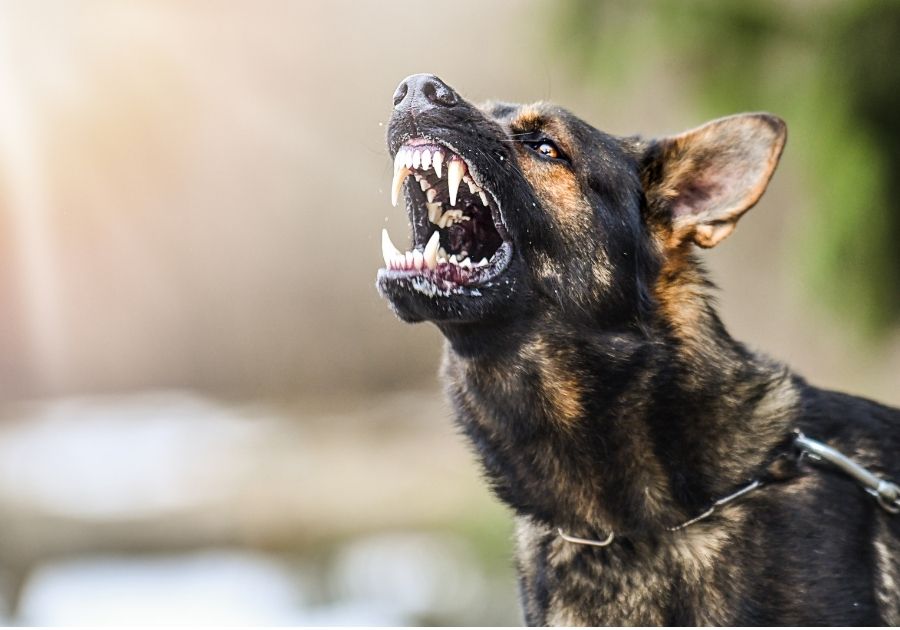
Most people think dogs are naturally aggressive, and this opinion might be an exaggerated conception.
According to the American Society for the Prevention of Animal Cruelty (ASPCA), aggression can be based on different forms such as; possessive, pain, territorial, and fear aggression.
Aggressive behaviors displayed by a dog become a potential threat towards people and other animals.
This trait might become dangerous if not controlled with caution, care, and instructions from animal professionals.
For instance, a dog can show signs of aggression when it feels threatened by the presence of an unfamiliar person.
Such behavior is territorial or dominance-based. It is worthy to note that this behavior is exhibited by signs that their owners can detect.
Below are some ways to tell if a dog is being aggressive:
1. Barking
Dogs will often bark for numerous reasons. Hence, a dog bark is not a strong indication but becomes one when exhibited with other signs.
Albeit, this sign plays an essential role in discovering factors that trigger your dog.
Recommended:
Do Dogs Get Tired Of Barking? What You Should Know
2. Growling
Growling, in most cases, is a behavior associated with communication to a dog’s state.
This sign expresses a warning note with a deep, rumbling sound that can threaten owners and people around.
This sign does not naturally mean aggression; it only becomes one when coupled with other behaviors, such as barking and snarling.
3. Snarling
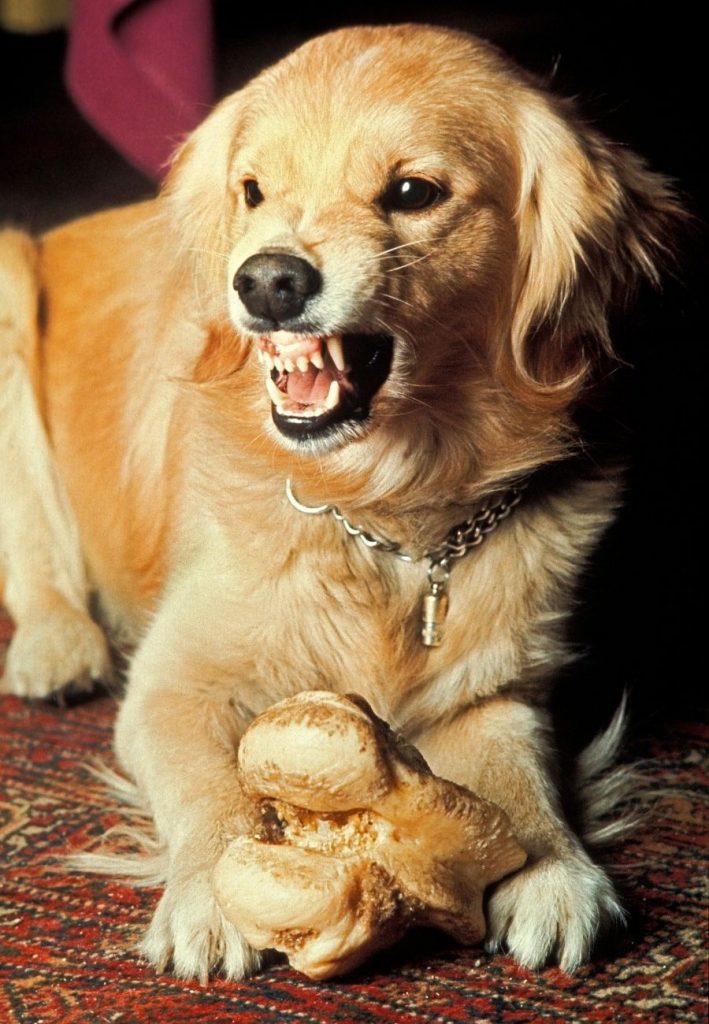
Snarling is a kind of an advanced growl typical with dogs when acting aggressively.
It differs from a usual growl in such a way that the canine’s teeth become more exposed, which serves as an imminent threat than a growl.
Depending on the cause of the aggression, a snarl could either be loud or low.
Therefore, it should be taken as a severe warning signal when the dog expresses this action.
4. Snapping
Snapping is a warning sign related to biting. Snapping is less forced and not necessarily directed at the skin than a bite.
It is more of a conclusive warning before carrying out an actual gnaw. Dogs will generally growl and bark before giving a snap.
When a dog sees a new face, fear and anxiety may build-up, leading to aggression.
Barks and growls will be expressed to show uneasiness, and then a snap follows if the person fails to pause or back off.
5. Biting
Biting is the most extreme act dogs execute when displaying aggression.
More like a last resort action, It involves direct skin contact with the teeth and can cause severe pain and discomfort to victims.
This sign is majorly used to measure or confirm a dog’s level of aggression.
Different Types Of Dog Aggression
Dogs may exhibit one particular type or different types of aggression, depending on what triggers them into the act.
Therefore, it is necessary to know the kind your dog exhibits before taking any further steps.
Below are some common types you should know:
1. Fear Aggression
Also known as anxiety aggression, it is the most common in dogs – it is mainly stirred by fear and stress.
Adrenaline will surely get the best out of your dog when it perceives discomfort or pressure.
The fear-based is probably the most dangerous form of attack a dog can exhibit, as it triggers other forms of aggression.
This form of aggressiveness can be handled by making the dog feel safe, secure, and comfortable.
2. Territorial Aggression
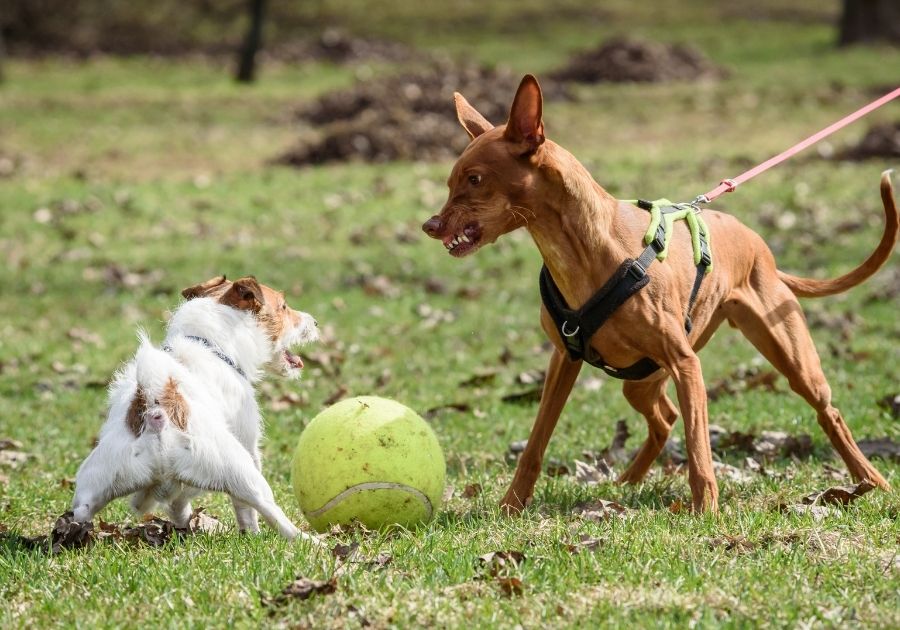
This often occurs within a dog’s area of residence, signifying dominance and control.
Dogs tend to express this behavior when an unfamiliar person or an animal enters their domain.
Diseases are capable of making dogs react aggressively.
Conditions such as rabies, epilepsy, and hypothyroidism are typical examples of diseases known to incline dogs into aggression.
4. Redirected Aggression
Dogs mostly experience this aggression type on their proprietors.
Dog caregivers often get bitten by their companion due to restriction, inappropriate handling, pain, etc.
5. Possession Aggression
Possession aggression, also known as resource guarding, is common in canines.
It occurs when a dog becomes obsessed with a treasured item such as toys, plates, food, etc.
Protecting its beloved object at all cost, a slight touch from another person or animal will trigger him to act defensively.
If you allow your buddy to enjoy her valued item without any form of interference from your end, you can easily manage this aggression.
6. Pain Aggression
One of the causes of dog aggression is pain, which can exist in various ways, from aches to reactions from an open wound.
Sometimes, it is difficult to detect since pain can occur internally.
Whenever your dog suddenly reacts aggressively, it might result from pain. Hence, a helping hand from a vet becomes needful.
7. Maternal Aggression
Maternal aggression is understandable in most animals, including dogs.
Mothers are keen on their pups to ensure their safety and can become aggressive on perceiving any form of threat. It is likely to lessen during the weaning stages.
Although, it is crucial to train puppies at their early stage for easy interaction and socialization with humans and other dogs.
To accomplish this, maternal aggression towards you might become unavoidable.
Recommended:
Best Dog Calming Treats (Top 10 & Why They’re Good)
10 Proven Tips on How to Calm an Aggressive Dog
Dogs’ aggressive behaviors are often based on what upsets them, leading to an aggressive response.
You must know what triggers your dog into aggression since numerous reasons can cause it, which will help you achieve desired success in calming your dog.
Below are some proven ways to subdue hostility in dogs:
1. Stay Calm
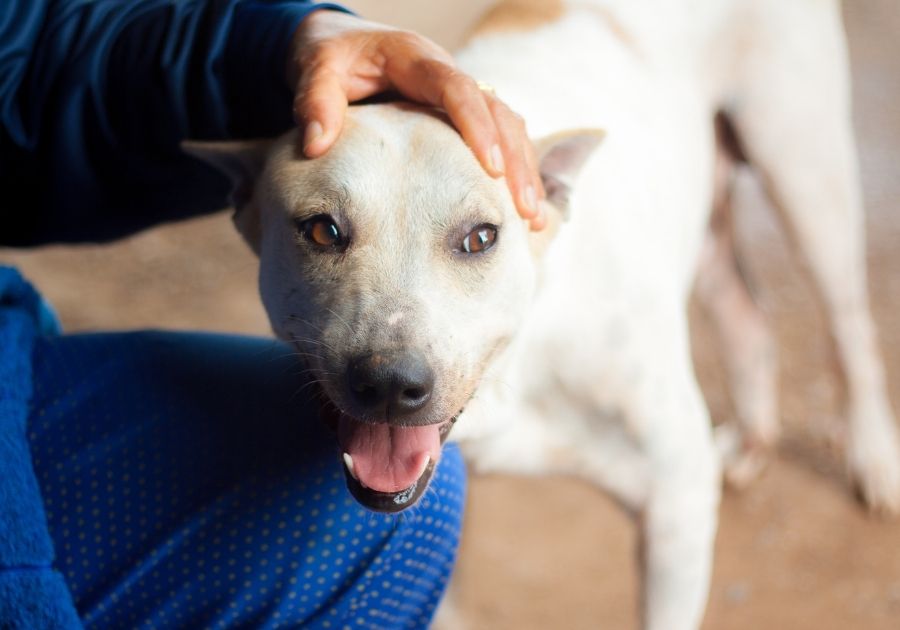
Aggression in dogs can be emotionally driven. Therefore, you need to remain calm when dealing with this behavior.
If your aim is to calm aggression, being aggressive with your aggressive dog will only lead to more hostility.
Dogs are capable of detecting the mood of others, so it is best to stay calm when handling them.
2. Redirect Your Dog’s Attention
Changing the focus of your dog’s attention during aggression is a critical skill in calming them down.
Whenever your dog is triggered, you can redirect its attention with eye-catching items like toys, food, etc.
3. Restraining Works
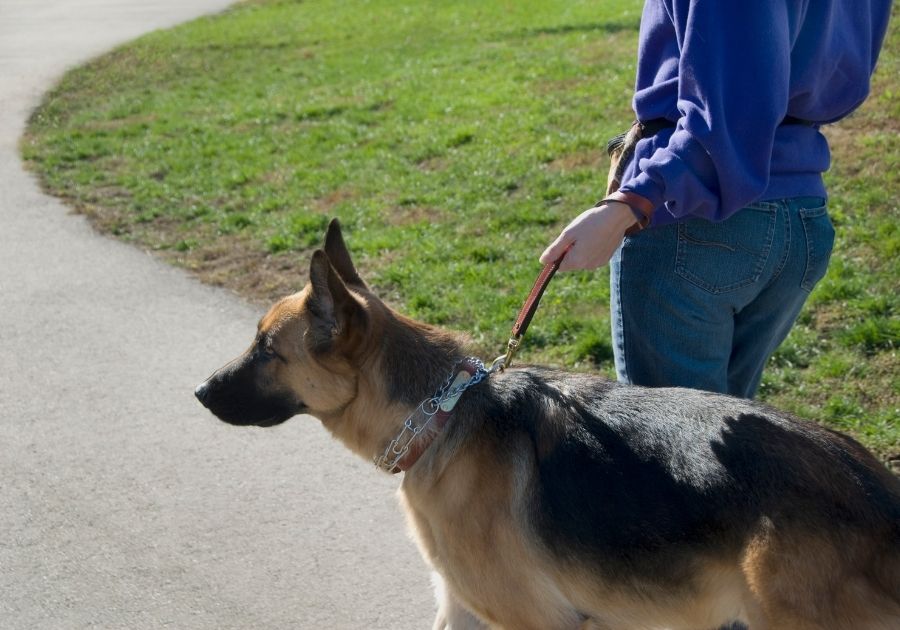
Practicing restraint is more of a preventive method of keeping your dog’s aggression at bay.
This approach is one of the quickest ways to ease them when triggered.
For instance, if your dog becomes aggressive due to the presence of a person, it is best to block them from reach to prevent any further action.
Using this method frequently can reduce the level of your dog’s aggression.
4. Avoid Triggering Events
Exposure to triggering situations can make your dog feel threatened. Crowded places, dogs, strangers, etc., can make a dog react aggressively.
It is vital as a dog owner to be aware of what triggers your dog into aggression.
However, in situations where the triggers become unavoidable, you can employ other tips like staying calm and redirecting your dog’s attention.
5. Make Your Dog Feel Safe
Whenever your dog feels uneased and you are aware of the situation, you need to express a moment of reassurance, signifying, ‘don’t worry pal, everything is alright’ by using simple body language.
If a situation requires you to stop a threat, you should step up and control such.
Making your dog feel safe boosts its confidence, leading to calmness, reducing its aggression levels in the process.
6. Create Boundaries
Keeping distance from what triggers your dog is another preventive method to evading aggression.
Ensure you create space whenever your dog tries to get in close contact with what might release any charge.
7. Enroll Your Dog in a Behavioral Course
Enrolling your dog in behavioral courses led by qualified animal trainers is an ideal method for reducing aggression.
This method comes in handy if you have tried other tips on this list and are still unable to prevent it.
Not only does it strengthen the trust and bond between you and your pooch in training, but dogs also become keen on instructions after taking behavioral courses.
8. Regular Exercise
Taking your dog out regularly for workouts is a beneficial approach that helps calm your dog’s volatile outburst.
Exercise will improve the state of mind of your buddy and will also assist him in burning excess energy in the process, which in return will prevent any possible act of aggression.
Dogs are known for feeling relaxed and eased after workouts such as hiking. Ensure you take your dog out frequently for exercise.
Recommended:
10 Ways To Provide Mental Stimulation For Dogs
Socializing your dog with other dogs or people will improve his communication and interaction levels.
Dogs become more tolerant when there is a high level of familiarity.
Executing this method will help reduce the status of your dog’s aggression.
As a dog owner or a future one, it is essential to socialize your dog as early as possible for effective results.
10. Seek Professional Advice From an Expert
Curbing this behavior in your dog might be a difficult task to carry out alone. However, this is not the end of the road for you.
Consulting an animal behaviorist is an ideal option that will put you on the path to controlling your dog’s aggressive actions.
Also, discussing medication with your veterinarian comes in handy if your dog has an underlying condition that may be a trigger.
Conclusion
Aggressive behaviors in dogs become intimidating and threatening toward people and animals around.
You should not take chances and put your loved ones at risk. Hence, you should take action to avoid this behavior from an early stage.
Finally, implementing the above tips will help mitigate your dog’s aggression.
Featured Image: Volodymyr_Plysiuk / Getty Images

